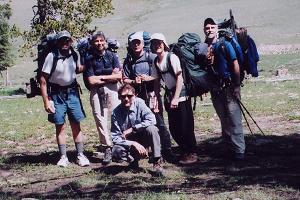
Gordon, Lidy, Stony, Adam, Chuck. Sjaak is kneeling.

|
|
The Ink Wells trailhead. From left of photo, Gordon, Lidy, Stony, Adam, Chuck. Sjaak is kneeling. |
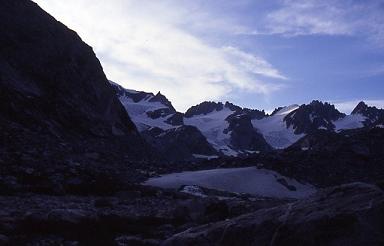
|
|
Dawn view west from the boulder field on summit day. |
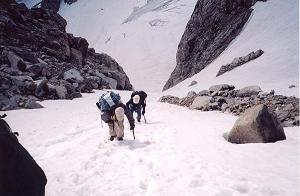
|
|
Adam (in back) and Stony climb the steep snow chute. |
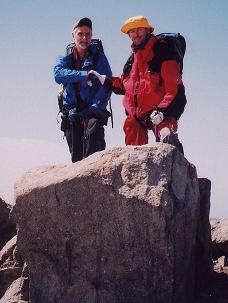
|
|
Chuck Bickes, at photo left, and Sjaak van Schie celebrate their respective list completions. |
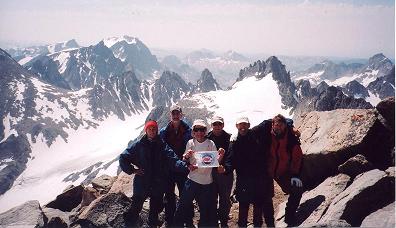
|
|
All six expedition members on top of Wyoming. From left of photo, Lidy, Chuck, Adam, Stony, Gordon, and Sjaak. |
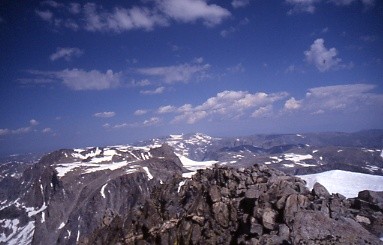
|
|
Summit view northwest to a nearby ridge system and more peaks of the Wind River Range. |
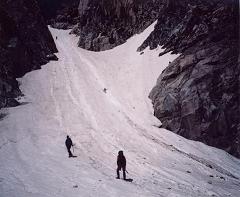
|
|
Gordon slides uncontrollably down the snow chute. A moat lies just beyond the photo's right edge. |
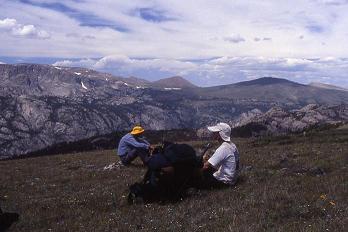
|
|
A break on the hike out, just prior to achieving Scenic Pass. Yellow hat - Sjaak van Schie; White hat - Adam Helman. |